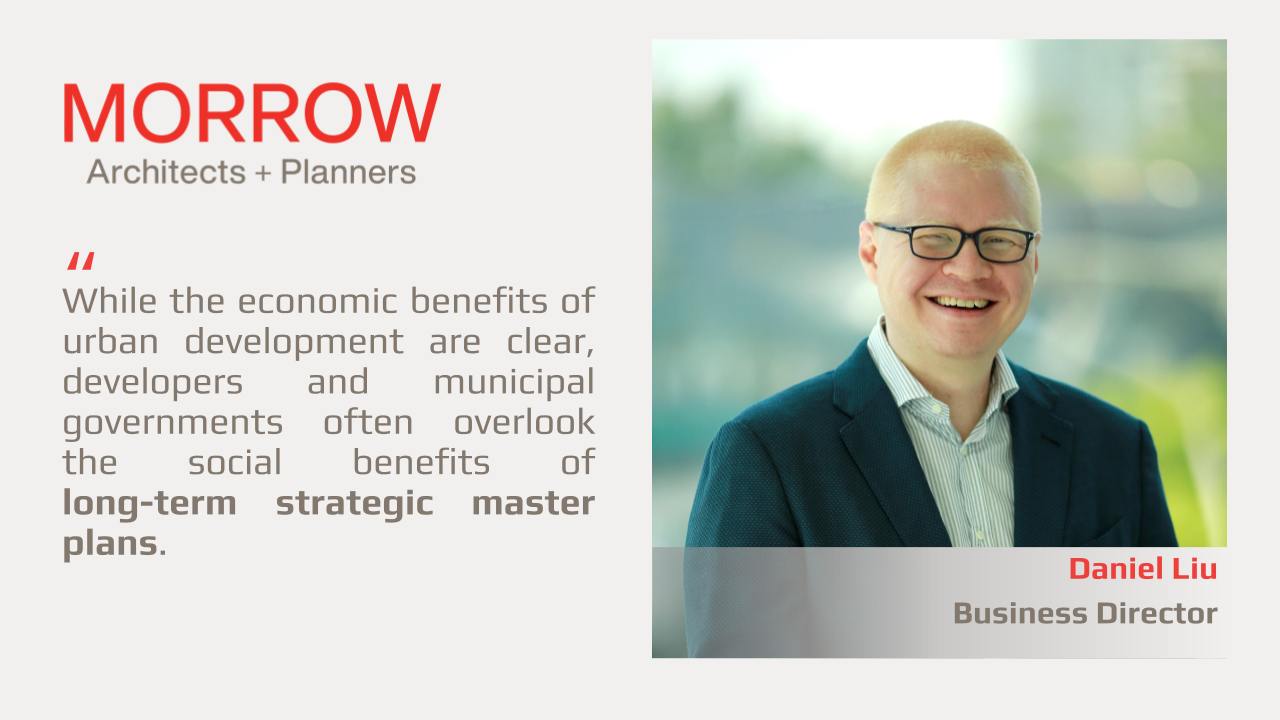While the economic benefits of urban development are clear, developers and municipal governments often overlook the social benefits of long-term strategic master plans. The unfortunate reality is that maximising long-term outcomes for urban spaces often clashes with the short-term incentives for developers and government officials. We see this repeatedly happening in both developed and developing nations, where long-term liveability is sacrificed for short-term economic or even political gain. As a result, the city and its people suffer and endure disamenities that take generations to overcome.
A mindset shift is thus needed. When formulating urban plans, responsible governments and rational development should look beyond the next real-estate project or election. However, this also means that citizens have to be educated on how good or bad urban planning can impact their day-to-day lives. Only after being armed with some fundamental urban planning principles can citizens demand more accountability from their leaders. This article is a short primer on how urban planning affects you.
Three Tenets of Good Urban Planning
In truth, urban planning has a pretty significant impact on people’s lives. Urban planning dictates where you can live, how you will get to work, and whether you can afford to live close to amenities like parks and supermarkets. With good planning, you can have a shorter commute, live closer to parks, and your kids can walk safely to school. In contrast, poor planning means more traffic jams, diminished access to healthcare, and even higher pollution levels. Good planning should be easily adaptable and encourage a more sustainable ecosystem for humans to interact with nature. As for poor planning – well, I think you get the picture.
- While urban planning is an iterative process, responsible planners must be bold enough to see beyond the reign of their political or economic leaders. Imagine your city’s leaders have envisioned sustaining 100,000 people in the next ten years. However, due to weak government policies, your city has ballooned to a population of 150,000 residents. At this point, the strain on municipal services has reached untenable levels. Further, the land zoned for future planning has been hastily ceded to developers to cater to this large population. Sadly, this is the story of many developing cities – planners take a short-term view with unrealistic expectations.
- Good urban planning does not just consider the built environment. Residential and commercial areas must be aligned to ensure enough residents can fully utilise commercial and public amenities. In Singapore, for example, early planners at the Housing and Development Board spent a significant amount of effort to ensure the economic resilience of neighbourhood commercial districts. This meant carefully planning for a minimum number of households walking distance to retail centres. As a result, local merchants would always have enough customers to buy their goods.
- Urban planners should be looking beyond their city when developing urban plans. Most cities in the world belong to a cluster of urban families, separated by varying expanses of rural settlements. Urban development of a city directly affects its neighbours – either strengthening and developing the region or weakening less economically developed areas. A classic example is how the rise of Silicon Valley outside of Palo Alto caused an economic explosion in San Francisco. This added a layer of complication that is sadly rarely addressed in modern planning, leaving cities unprepared for systemic changes in their region.
What happens when urban planning goes wrong?
Since physical infrastructure is expensive and labour intensive to construct, reversing bad decisions is incredibly hard to do. As a result, entire subsections of a city’s population will be relegated to living in second, or even third-class conditions at the cost of a small minority. This is dangerous because cities that isolate their residents from economic growth have the widest wealth gaps. These wealth gaps in turn reinforce systemic issues that lead to socio-economic stratification.
The economic success story of Singapore is a good example of how a long-term approach to urban planning, with careful consideration of land use, has allowed the city-state to flourish! Not only does Singapore no longer have any ghettos, people of varying ethnic backgrounds and socio-economic backgrounds live together peacefully in the same community. This variety has only made the social fabric of Singapore stronger, not weaker.


